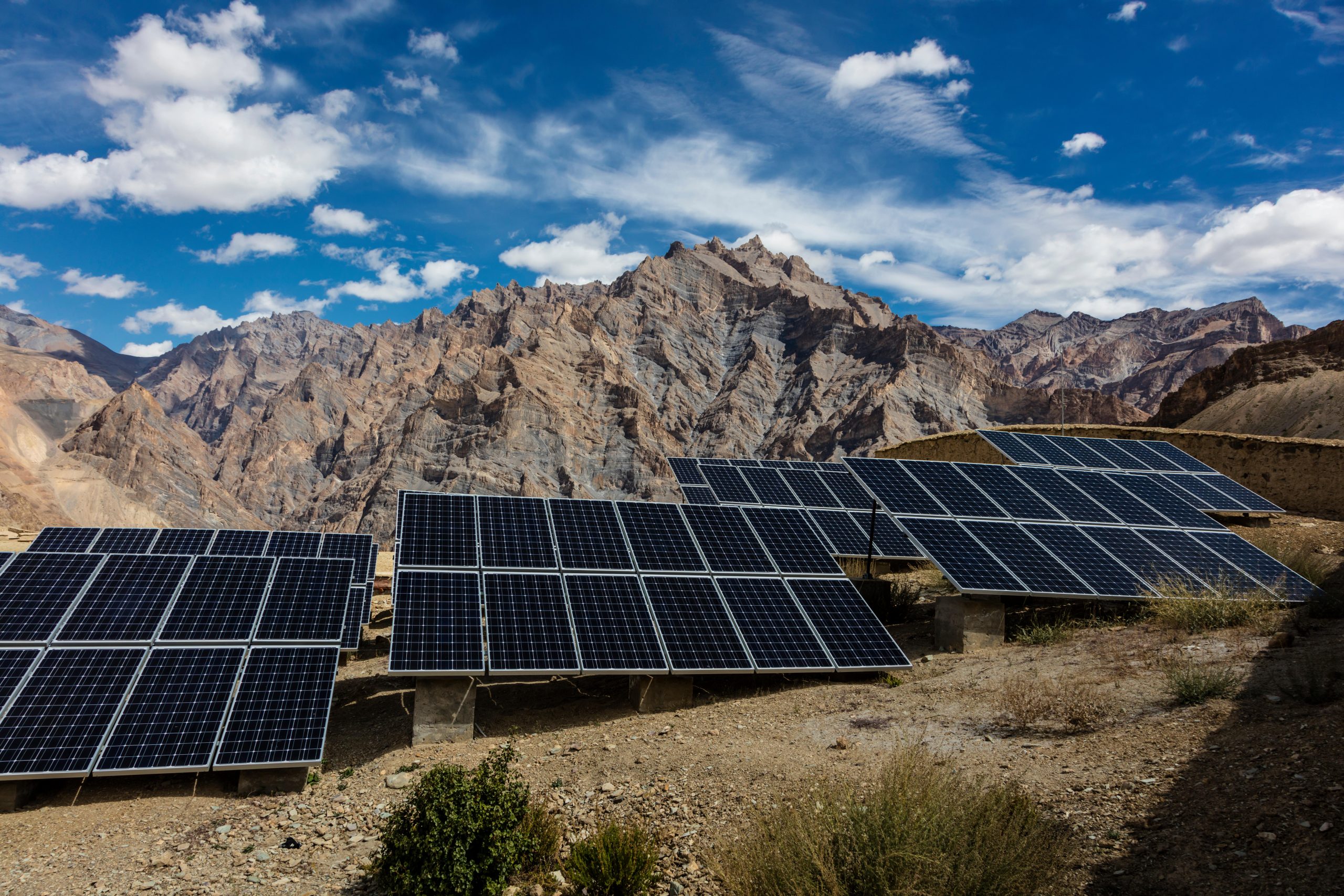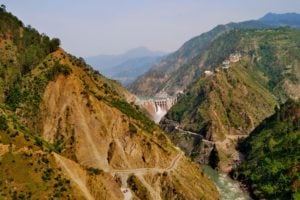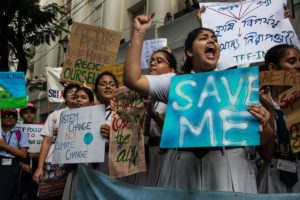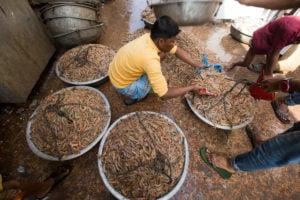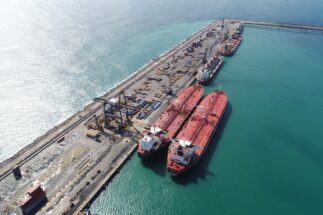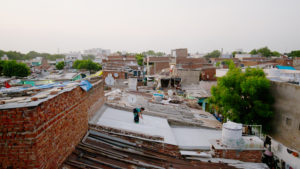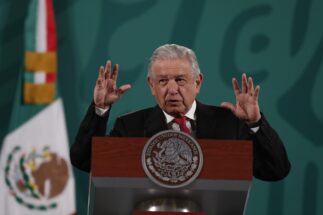In one hour, enough energy reaches the Earth from the sun to meet humanity’s energy needs for an entire year. To date, we have made use of a fraction of the “untapped potential” of this enormous source of renewable energy. But an ambitious project, spearheaded by India and launched last week at the UN climate summit COP26, seeks to redress this.
The Green Grids Initiative-One Sun One World One Grid (GGI-OSOWOG) is an international initiative to create an interconnected global power grid. It imagines renewable energy from solar, wind and water flowing “across continents, countries and communities” from where it is abundant to where it is needed.
OSOWOG was first announced by Indian Prime Minister Narendra Modi in 2018. In May 2021 a partnership was revealed with the UK’s Green Grids Initiative, a coalition to accelerate the deployment of solar infrastructure around the world. The project was formally launched at COP26 on 2 November.
The techno-utopian rhetoric around a global clean grid is appealing. But for all the fanfare around recent announcements, three years after the idea first saw the light of day, the project is still light on details. Are cables to be laid across mountains and oceans? How are the many technical, political and institutional complexities to be navigated?
What is GGI-OSOWOG and where will it happen first?
The project offers a visionary solution to the problem of intermittent renewable energy. Wind power is dependent upon the weather, while solar power can’t be generated overnight. But even in the middle of the night, the sun is always shining on the other side of the planet.
A power network so vast it can tap into this endless supply of renewable energy could deliver clean electricity exactly where it’s needed at any time of the day or night.
The GGI-OSOWOG initiative aims to set up transmission infrastructure between countries. This will help countries to “reduce reliance on coal for meeting energy demand in time periods when renewable energy is not available”, said Vibhuti Garg, lead energy economist for India at the think tank Institute for Energy Economics and Financial Analysis (IEEFA). Currently, almost 70% of India’s energy needs are met with coal power.
According to early reports, India’s grid will be connected with the rest of South Asia first, and then expanded to the Middle East and Southeast Asia. In the second phase, the grid will link up with a pool of connected African grids. The third phase will connect the grid to the rest of the world; the grid aims for 2,600 GW of interconnection by 2050.
“We are looking at the first OSOWOG cables to start off the process possibly within two years of today,” said Ajay Mathur, director-general of the International Solar Alliance (ISA), speaking with The Third Pole at COP26 in Glasgow. Mathur pointed out that high-voltage power cables are already widely used across the world, for example for the UK-Norway connection inaugurated last month, and projects to connect the national grids of Australia-Singapore and Egypt-Saudi Arabia.
The ISA is an intergovernmental alliance of countries initiated by India, seeking to catalyse the adoption of solar technology. It has worked on the OSOWOG concept alongside the World Bank and India’s Ministry for New and Renewable Energy. Eighty member countries of the ISA have endorsed GGI-OSOWOG.
Aditya Valiathan Pillai, an associate fellow at Indian think tank the Centre for Policy Research in Delhi, explained that international grids are not new in South Asia either. Cross-border cables and multilateral power trading already exist between India and Nepal, Bhutan, Bangladesh and Myanmar. What’s different about OSOWOG is the scale of the plan.
“These are slow processes, it’s important to remember that,” said Pillai. For example, he said, “it’s taken the better part of a decade in South Asia to build the interconnections between India and Nepal”. If one were to look at how grid integration [across Asia] has gone so far, he added, “it would be quite clear that it takes many years firstly to build enough political understanding, to raise funds to build interconnections and finally to decide on the nitty-gritty rules that allow for the transfer of electrons across this line.”
Pillai noted that the European Union was able to fast track grid interconnections thanks to its robust regulatory institutions and a flexible electricity market where power can be sold and purchased in near real time. But South Asia lacks the regional cooperation mechanisms of the EU.

An international endeavour
“The most important thing about OSOWOG and COP26 was it being launched as an international initiative,” stressed the ISA’s Mathur. “This is India’s idea, but we have consciously tried to internationalise it.”
India’s partnership with the UK signals that “this is a global agenda and not just a Modi agenda”, Pillai said. “If you talked about regional power pools five years ago it was such a fringe idea and now it’s at the centre of the news cycle.”
Then there is the practical side of things. “The UK’s been in this business for a long time,” said Mathur, citing its connections with the European continent and new connection with Norway. Experts also said the UK’s diplomatic weight and financial firepower will be helpful in overcoming potential future roadblocks.
OSOWOG and India’s climate pledges
The launch of GGI-OSOWOG came hot on the heels of new climate pledges announced by Modi during the first week of COP26. As well as stating that India would reach net-zero emissions by 2070, when carbon emissions produced will be balanced by those that are absorbed, the world’s third-largest emitter (after China and the US) has pledged to generate 50% of its electricity from renewable sources by 2030.
“OSOWOG is important to India’s net-zero pledges,” said Gagan Sidhu of CEEW, a Delhi-based think tank that has been tracking India’s energy transition pathways for years.
Because solar and wind are intermittent, battery storage or an alternative source of power (usually fossil fuels or large hydropower) is used to complement renewable energy and stabilise the grid. According to a recent CEEW study, India would need 5,600GW of solar capacity to achieve net zero by 2070, over 11 times the capacity Modi has pledged to reach by 2030. This would require a huge amount of battery storage – which would be extremely expensive. “In this context, OSOWOG is seen as one of the potential alternatives to storage and reducing costs of renewable energy integration,” said Sidhu.
Sidhu added that GGI-OSOWOG could help scale up global cooperation on climate action. “A grid that connects different time zones represents an ambitious alternative to expensive storage on both ends. Not only would it help meet climate commitments, it would also enhance energy security and meet development priorities,” he said.
Regional grids the main focus
Talk of a “connected global grid” conjures images of huge cables crisscrossing the globe. But the reality would look very different, according to experts who spoke with The Third Pole. GGI-OSOWOG is “not about putting a set of wires around the world” Mathur stressed. “It’s interconnections between regional grids.”
The political slogan of OSOWOG, which is a globally interconnected grid, is a bit of a slogan like calling for world peaceAditya Valiathan Pillai, associate fellow at the Centre for Policy Research
“Take the Viking Link for example,” said Sidhu. “It’s a 760km-long undersea transmission link between the UK and Denmark, reported to cost USD 2.2 billion and expected to open in 2023.” It was conceived as a way to share variable wind power, a successful example of how renewable sources’ intermittency can be addressed through connectivity, Sidhu explained. “OSOWOG will achieve the same thing, but it just happens to be much more ambitious in its overall vision.”
Pillai cautions that “the political slogan of OSOWOG, which is a globally interconnected grid, is a bit of a slogan like calling for world peace”.
“I think it’ll always be [about] denser regional connections with some outcroppings to neighbouring regions,” he said, pointing out the huge diplomatic effort involved in getting even a regional power pool built. Furthermore, some countries will want to avoid the geopolitical risk of a regional grid and choose to balance their energy needs domestically through hydropower or battery storage.
Practical hurdles
Maintaining a stable grid over large geographical areas is not easy, especially with energy demand being distributed across a geographically diverse region such as South Asia, where population density, and consequent energy demand, varies widely. To function, any grid needs a constant base load, or a minimum level of electricity flow, at any given time. A bigger grid becomes more difficult to stabilise with a steady electricity current because it will experience demand peaks and drops at different times in different places.
Sidhu pointed out that “electricity trading doesn’t necessarily require convergence of grid operations”.
In India, Sidhu said, where there are interconnected grids linking different areas, there are measures in place to ensure a grid tripping in one region does not trip the entire national grid. “The same experience will be scaled up” for a regional grid, said Sidhu.
Achieving 2,600 GW of interconnection by 2050 is “an ambitious target”, commented the IEEFA’s Vibhuti Garg. “We need to break it down into short term and more achievable targets. The idea of OSOWOG is great but it has its own challenges.” These are likely to be more logistic than technological, Mathur explained.
“We moved in this area because at least the base technologies are fairly clear.” High voltage, direct current (HVDC) connections are a well established technology; it’s their management at a cross-border level that is new, Mathur said. The initiative will require infrastructure upgrades in transmission and interconnections, as well as technology and knowledge transfer for underdeveloped solar markets, Sidhu added.
Securing enough buy-in for GGI-OSOWOG to work
The initiative raises questions of national sovereignty, which committee members need to address. And given that extensive reliance on a global or regional grid could expose nations to issues in other countries, there could be some reluctance from an energy security perspective.
Mathur said that all 80 countries that are full members of the ISA endorsed the idea of OSOWOG at the ISA’s assembly on 26 October. “We don’t see any issues at a political, ideological or conceptual level. Now we have to work on the economics of it.”
5,600 GW
Solar capacity needed for India to achieve net zero by 2070, according to CEEW
Sidhu said that participating countries may not need to cede control of their grid management and operations to a single unified system operator. In fact, he said, that may not even be technically feasible or desirable. “Potentially we will see disaggregated or smaller pools where there is common grid management,” he said, “which in turn trade electricity with other electricity market pools.” OSOWOG will become a testing ground for multiple grid operation models which will keep evolving, he added.
Need for institutions to manage OSOWOG
According to Pillai, the GGI-OSOWOG’s biggest pitfall is the question of institutions. “Countries that are now looking at this announcement warily will look for institutional mechanisms that they can trust and they know are stable and equitable,” he said, “one that is not dominated by one country, nor by the major financier.”
The institutions set up within the next three years will determine what happens in the next 10, 15 years, he explained. “In a way the target is not building a transmission line quickly, but creating credible regulations at pace.”
Moving beyond the political announcement, he added, “there’s a lot of diplomatic hard graft that needs to come after this.”
